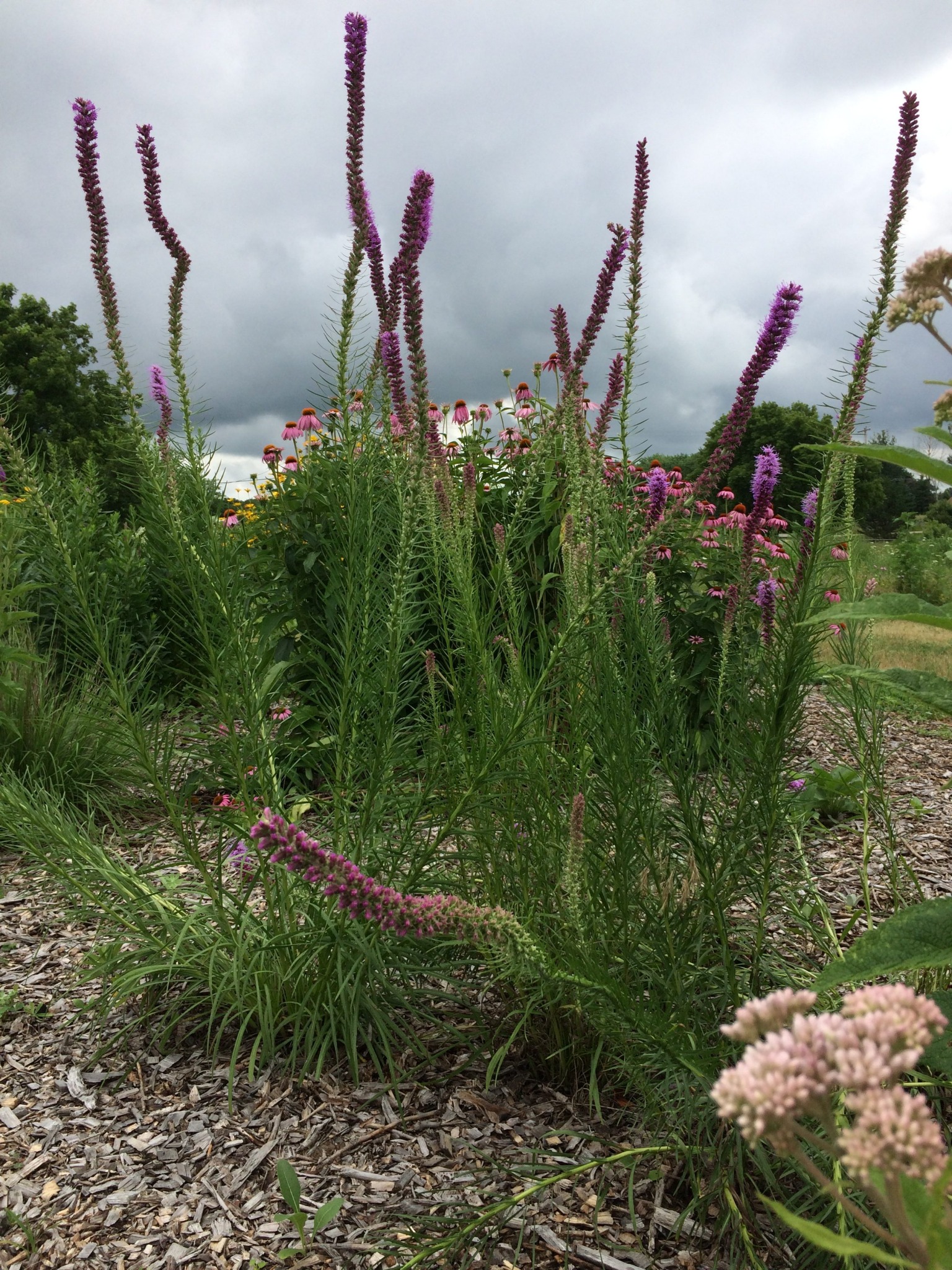Description
OUT OF STOCK
Tall, erect, purplish- pink spike in August-September
Tall, erect, purplish- pink spike in August-September
OUT OF STOCK
Tall, erect, purplish- pink spike in August-September
Spikes of yellow pea-like flowers in spring cover this broad plant – really makes you say “awe” or “oooh” when it blooms. All season resembles a shrub, flowers turn into round seed pods the size of a marble. This is a legume that improves soil fertility by making nitrogen available to the Baptisa and surrounding plants.
Size: 3’ x 3’
Care: sun to part shade in moist well-drained to dry soil.
Native: Missouri to Mississippi to TX
Wildlife Value: Attracts butterflies. Deer resistant
Awards: Missouri Botanic Garden Plant of Merit.
Baptisia is Greek meaning “to dye” referring to use of Baptisia australis as a substitute for indigo dye. Sphaerocarpa means “round seed.” Collected before 1834 by Thomas Nuttall (1786-1859) English planthunter who scoured the US from the Atlantic to the Pacific.
OUT OF STOCK
Lemon yellow silky petals bloom late spring to early fall on this tough-as-nails native
Size: 9-18” x 12-15”
Care: sun in well-drained soil, drought tolerant
Native: Great Plains: Central Canada to TX, Michigan to Montana, WI native
1st described in 1818 by Thomas Nuttall, English planthunter who collected hundreds of “new” plants in North America. Caly is Greek for calyx; lophos for “the back of the neck; crest of a hill or helmet” serrulatus means “minutely serrate” or “saw-toothed” describing the leaf margins.
Brilliant orange with purple spots, turks-cap lily with dramatic, swept-back petals blooming late summer to early fall. Slow to mature but when it does it bears up to 40 flowers on one plant.
Size: 10’ x 12”
Care: Sun in moist to moist-well-drained, acidic soil
Native: from VT to Fl & west to Mississippi River, Wisconsin native
Lilium was named for the Greek word for smooth, polished referring to its leaves. This collected before 1665. In his 1665 book, Flora, seu de Florum Cultura John Rea, nurseryman and author, called it the “Virginia Martagon.” Sold in America’s 1st plant catalog, Bartram’s Broadside, 1783. L.H. Bailey (1913): “The most magnificent and showy of native North American species, well worthy of extensive cultivation.”
Fragrant medium pink umbels, like an upside down ballerina’s skirt, July – September. One of internationally known garden designer Piet Oudolf’s 100 “MUST HAVE” plants, Gardens Illustrated 94 (2013)
Size: 3’-4’ x 2-3’
Care: Sun in moist to moist well-drained soil
Native: North America – all states except those along the Pacific Coast – Wisconsin native.
Wildlife Value: host for Monarch caterpillars, flowers are source of nectar for several butterflies
Named after Asclepias, a Greek god of medicine. Native American groups used Swamp milkweed – Chippewa to increase their strength & the stems made into twine; Iroquois to heal navels in babies, to increase or decrease urine and to make a person strong enough to punish witches; Meskwaki to drive out tapeworms; and Menominee used it as an ingredient in food – added to deer soup & cornmeal mush. Oneida used the root to remedy asthma and whooping cough. They made thread to sew moccasins with the stems. Lakota Sioux: “The pulverized root is made into a salve which is used to treat swollen glands. The young seed pods are edible after cooking. An infusion of the roots is used to treat asthma, rheumatism, syphilis, and a weak heart.” Listed as growing in England in Philip Miller’s Gardeners’ Dictionary, 1768. Grown at America’s 1st botanic garden, Elgin Botanic Garden 1811. Pressed specimen in Emily Dickinson’s herbarium. “The downy parachutes . . . attached to each seed are six times more buoyant than cork and five times warmer than wool. Large quantities of milkweed were grown for use as stuffing in pillows and lifejackets during World War II.” USDA Natural Resources Conservation Service.

